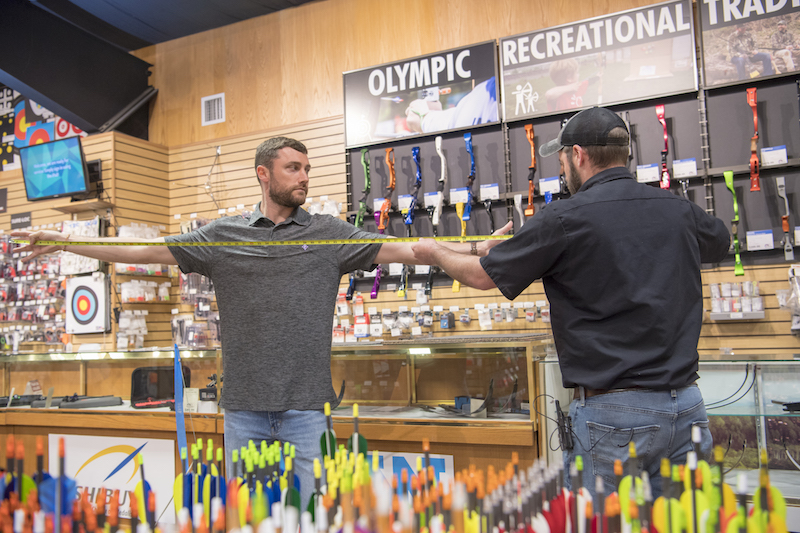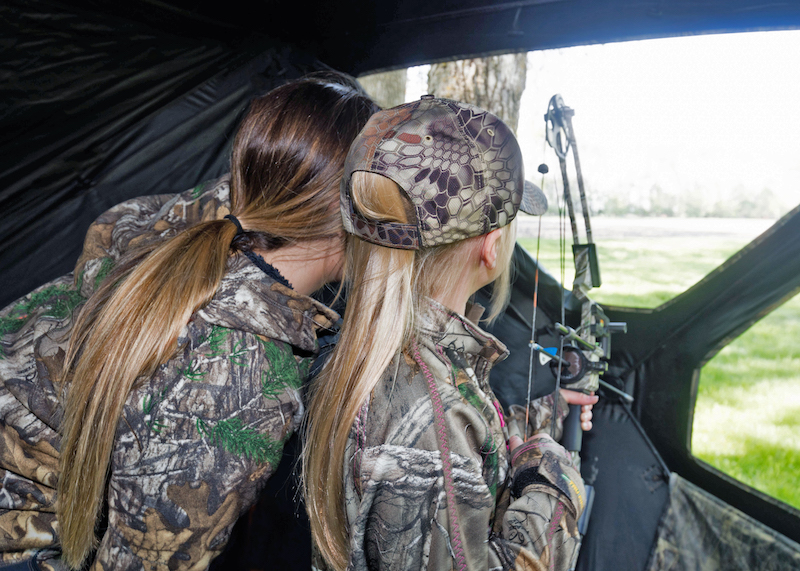Do you want to buy a compound bow, but you’re unsure where to start? Don’t fear. This guide helps you find a bow that fits your body and budget.
We spoke with Mark Wenberg to learn what first-time bow buyers must consider. Wenberg is director of product development for Arcus Hunting, which markets and manufactures Obsession Bows. He said archers won’t become proficient unless they find a bow that fits them. “It’s as important as an athlete having the right shoes,” he said.
Yes, you can buy a new bow on your own, but Wenberg recommends newcomers visit a pro shop and work with a professional who ensures you’ll get what you need. Don’t be nervous or intimidated about seeking help. Even the world’s best archers had a first day, so why not begin your journey with help from a pro?
“These people want to help you,” Wenberg said. “They want you to have a great experience with archery, and they want this to be a lifelong sport for you. They’re familiar working with beginners, so don’t worry about it.”

Make sure you know the terms for the parts of the compound bow. Photo Credit: ATA
To better understand bow specs and parts before visiting an archery shop, read these Bowhunting 360 articles:
– Understanding the Specs on Compound Bows
– Bowhunting Encyclopedia: Know Your Terms
With a basic understanding of let-off, bow length, draw weight, speed ratings, and compound-bow parts, you’ll feel more comfortable talking with a pro.
Many compound bows cost over $1,000, but Wenberg said you’ll find high-quality bows for under $500. A more expensive bow won’t necessarily make you more accurate. In fact, some faster, more expensive bows give beginners trouble.
“You want a bow that’s forgiving and easy to shoot because you’re learning,” Wenberg said. “Speed is good, but it’s also touchy and amplifies mistakes.”
When buying a bow, you must add sights, a stabilizer, wrist strap and an arrow rest. You can buy accessories individually or as an affordable “ready-to-shoot” package. Wenberg said buying individual items takes more time and study, but as your skills and knowledge increase, you can upgrade one piece at a time. After that, you’ll just need arrows and broadheads.

Make sure you’re being fitted for the proper draw length and draw weight. Photo Credit: ATA
No matter how much you spend, you must choose a bow that fits your draw length, which is how far you pull back your bow. Also make sure you can handle its draw weight, which is the force needed to draw the bow. Consult the pro shop’s experts to ensure the bow matches those specifications, or you’ll never shoot it properly.
Your bow should also feel good to hold and shoot. Bow reviews are interesting to read, but the bow you buy should match your personal preferences. Shoot several makes, models and draw weights to compare their fit and feel.
Wenberg further suggests comparing and considering these features as you weigh your options:
– Bow length: Bows with longer axle-to-axle measurements are more forgiving because they’re more stable and less susceptible to torque. A 33- to 35-inch axle-to-axle bow, for example, is more forgiving than a 28- or 30-inch axle-to-axle bow.
– Brace height: This is the distance between the bowstring and the deepest part of the bow grip. The shorter the brace height, the longer the arrow stays on the string, which increases the chance for mistakes. A 6- or 7-inch brace height is satisfactory for beginners.
– Speed: How fast should your bow shoot? Wenberg said a good hunting bow shoots arrows at about 280 to 290 feet per second.
Wenberg also favors quiet-shooting bows. Sound travels at 1,125 fps, which is much faster than any bow setup. Deer can react quickly to odd noises and often “jump the string,” which typically causes the arrow to pass over the deer. A quiet bow can reduce that problem. Rubber dampeners mount to the limbs and riser to absorb vibrations, and string stops suppress string oscillations upon the arrow’s release. Both items reduce noise. Archery pros often add bowstring silencers and other accessories to further reduce noise.

Manufacturers make bows specifically designed for smaller hands and smaller body frames. Photo Credit: ATA
Bow companies design bows specifically for men, women and children. For example, Women’s bows weigh less and have smaller grips to make them easier and more comfortable to hold and shoot. Wenberg advises beginners to buy a bow built for them.
Although you might find a good, inexpensive used bow online or from a friend, make sure it fits you. Wenberg advises first-time buyers to avoid used bows. Only consider them when you’re more experienced and buying a second or third bow.
“There’s no substitute for having a great experience with help from a knowledgeable staff member who can get you started on the right foot,” Wenberg said.
Once you buy a bow, have an archery technician set it up and tune it. Wenberg also suggests taking lessons to ensure you learn proper form and avoid bad habits. Then shoot your bow often and have fun!